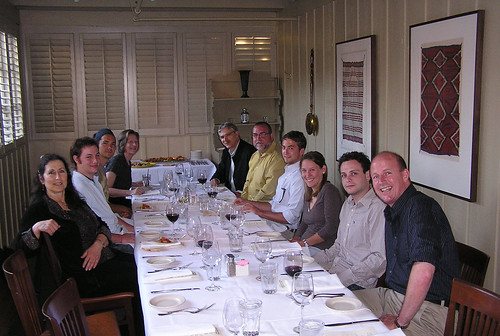News from Jackie - Current senior at U. of PENN, Master of Architecture Program
Getting into architecture school is not always (in fact, rarely) about how good you are as an *architectural* designer. One of the things that my instructors and professors at Penn have told me about the admissions process is that it’s about the kinds of potential that they see in the portfolios of applicants. Just because an applicant has a large array of architecture projects doesn’t mean he/she will get in. I have seen a number of portfolios from my classmates, and most of them are non-architectural designs in majority - sculpture, drawings, graphic design, etc. are all welcome. It seems to be that they are looking for students to have an eye for space, composition, and of course, general visual aesthetics.
The curriculum at Penn and at the other big-name architecture schools is a mix of theoretical and practical. With the exception of the core construction classes, you will never be prompted to do anything like window detail drawings. look at it this way - you go to school to learn how to expand your design sensibilities and you go to work to learn how to make things practical/buildable. There are people who really resist the theory part of architecture school, and if you don’t keep an open mind, it’s tough to enjoy yourself in these programs. That said, there is also consideration given to how real a project can be. After all, you can’t convince a jury that what you are doing is “architecture” if it seems like there is no way that it could possible exist in real life.
Pedagogically, there is a current trend in architecture academia going toward generative designs, the specifics of which I won’t go into because it would take some time to explain. But basically, generative design often use mathematics and computer science to come up with interesting patterns and forms. The trouble people run into with generative design (in my opinion, at least) is that it’s visually very exciting, but often spatially lacking. But that is not to say that if you go to architecture school, you’ll be required to do this kind of design. It’s just good to be aware of it, because there always seems to be students who are completely surprised by (and sometimes dismayed at) this trend. Also, in general, there is less and less hand-drawing, and more and more computer drawing.
In general, the first year (or 1 1/2 years) is very structured. At PennDesign, everyone takes five courses and one design studio each semester. The required courses are construction, environmental systems, structures, visual studies, and history/theory. Some of them are meant to help with the licensing exam in the future. And while the core courses don’t require nearly the time or the brain power that an average undergraduate course does, studio alone will more than make up for it. Design studios are the most time-intensive - the stories about architecture students staying in studio for days at a time are not made up at all, because there are times when that kind of thing happens. If you love designing, you will have no problem spending the time and energy in studio. But I often find that there are people who don’t have their hearts in it, and the whole experience just turns out to be a waste of time (and tuition money).
I would encourage anyone who is thinking about architecture school to evaluate his/her motivation. It is certainly not for everyone. I came to Penn directly out of Stanford, and I felt that I was ready to tackle it. Some people may want to take some time off and work at an architecture office to see if the field is fit for them. And some people, like me, may want to dive right into it because they felt like they hadn’t gotten enough of it yet.
–
I realize that there will likely be plenty other questions, so feel free to have your students email me if they want more advice/answers. I may not be able to provide all the answers, but now that I’m in my final year, I think I can at least guide them in the right direction. If they want to see some of my work, they can take a look at my
portfolio. If they want to see more student work from Penn, there is the
student work archive.


